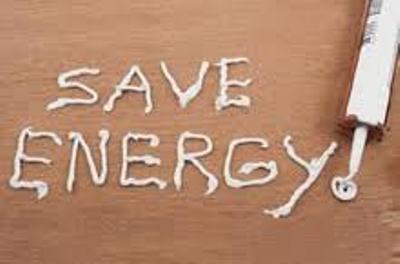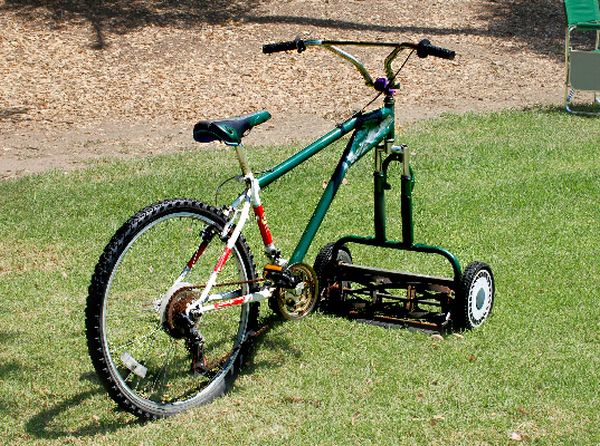
Energy saving habit is not just good habits to save the environment, but also save money for the homeowner. The target of ‘Net Zero Energy ‘ may be a little difficult to target as our homes have many energy using appliances. It can be achieved only with making an investment in a renewable energy source. That investment could take over 5 years to pay back. There are, however, many simple steps that can be taken by the homeowner to develop good energy usage habits that will lead to substantial reduction in his monthly energy bills. Some of these steps are detailed below.
1. Conducting a home energy audit
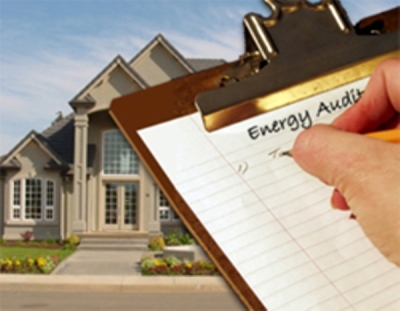
The first step in determining what you can save-on, is to list what you currently use. This is called an energy audit of the home. You can hire a professional to do it, but it is largely common sense and can be done yourself. Start with a walk through of your home, list each energy consuming device in each room. These include lights, heaters, electronics, air conditioning equipment, refrigerators, cooking ranges, ovens and so on. List these in an excel type worksheet with the energy consumption in wattage. Much of this information would be on the equipment nameplates or in product brochures available on the internet.
Once you have this list, pick various times of the day, and mark which of the appliances is turned on and if possible for how long it remains on before it is turned off. Examples of different times of the day could be, say 8 am in the morning, around 10 am, again when the midday meal is being cooked, in the late afternoon say 3 pm and again around sunset time. Another set of readings could be at bedtime. If wattage of the appliances is multiplied by the time (hours) that they are on, the energy consumption in watt hours is your utility bill.
Even if the energy you record on your worksheet does not quite add up to the energy consumption shown on the utility bill, it still is good enough to start an energy saving plan for the home.
2. Heating is the major consumer of energy in the home
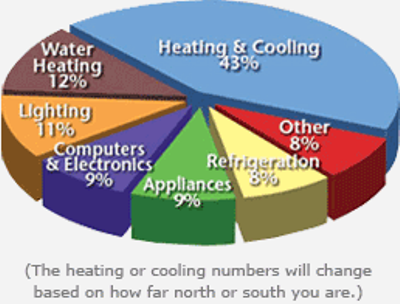
Heating of the room in winter seasons for comfort, accounts for almost 43% in the home energy bill. Heating water for the bathrooms and kitchen adds another 12%.
Once this energy pie-chart is understood, many energy saving ideas can emerge. For example, the thermostat setting for home heating or cooling could be changed by a few degrees to save on energy. In the day time, the bedrooms do not need as much heating or cooling as the living spaces. At night this is reversed with the bedrooms needing more comfort than the living and kitchen areas. Most often, homeowners tend to set a temperature based on perception and do not change it at all. When in bed, for example, since you would cover yourself with a blanket or quilt in winter, the temperature setting can be up to 5 degrees lower for heating without any loss of comfort. A fan to circulate air helps with comfort both in heating and cooling. A good way to start is to experiment with lower settings and see if these are acceptable.
Most bathroom water heaters can also be set lower to give warm water, rather than scalding hot water. With storage type water heaters, the heater turns on and off to maintain the water tank at the set temperature. When the hot water is used, we tend to run the hot water mixed with cold water for comfort.
Once we realize this, we can set the thermostat on the water heater lower and save energy. It may also make sense to use a timer that turns the water heater on early in the morning before bathroom usage starts and to turn it off once the family has finished using the bathroom. The same cycle can be repeated in the evening, if needed.
A more advanced form of energy conservation is to use timers to switch off certain appliances when other appliances come on. For example, when the dryer of a clothes washing machine or dish washer comes on, the water heater in the bathroom can be turned off. Since the dryer cycle is no more than 10 to 20 minutes, the bath temperature would cool below set temperature for this time, but the difference would not be noticeable. This would help shave peak energy demand from the home and result in lower utility bills.
3. Changing to energy efficient lighting
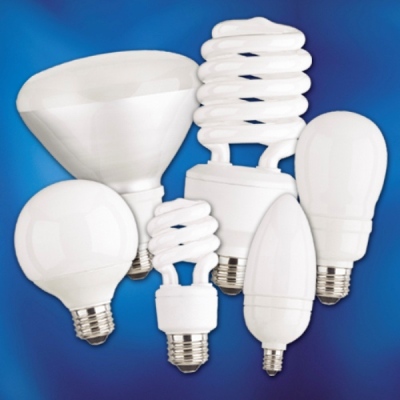
Lighting accounts for another 11% of energy usage in the home. Many of us tend to turn on lights at sunset all round the house and pretty much leave them on until we get to bed. The first energy conservation step is to develop the habit of turning lights off as we leave a room. There are low cost devices like motion sensors that can be fitted to either turn lights on or to increase brightness when someone comes into a room and reduce lighting when the room is unoccupied.
The second step to be taken is to use the energy-efficient Compact Fluorescent Lamps (CFL) or LED lamps, especially in areas like passages and the porch where lights tend to be on for longer periods of time. Manufacture of energy intensive incandescent lamps of larger wattage is already being banned in many countries.
4. Turn off electronic appliances, don’t put them on stand-by
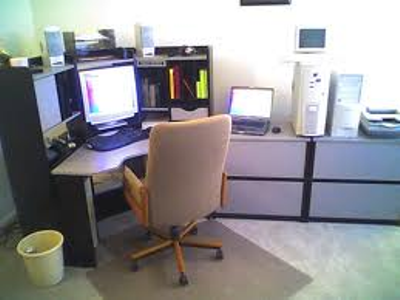
In the past decade, the usage of TV sets, computers, video and music players, mobile communication devices and the like have exploded. Each member of the family now has his or her own devices and all of these tend to kept on and in the stand-by power mode. The stand-by mode, while being lower in power consumption than the operating mode, is still an energy user. These devices also tend to be kept connected at all hours of the day. Home electronics is already accounting for some 9 % of home energy usage.
The energy saving habit to be developed is to switch-off and unplug these devices instead of leaving them on stand-by power mode. It does not take more than 1-2 minutes for any of these devices to be powered up for use.
5. Change other appliances to Energy Star rated devices

Once the top four energy saving steps has been taken, it is time to look at the other home appliances like Refrigerators, Deep Freezes and Air conditioners. These appliances are now designed to have greater energy efficiency than previously and have an Energy Star rating. If you have older appliances in the house, it is time to look at replacing them with newer and more energy efficient appliances.
6. Plug leakages of energy

As already noted, home heating and home air conditioning are major energy users. The energy cost of using these appliances is impacted in a major way by air leakages from the home. In the energy audit walk through, it is useful to see if there are small gaps in window panes or door frames or at pipe inlet and egress points from the home through which the indoor heated or cooled air escapes. If there are such leakage points, it is useful to get them filled with putty or cement.
Energy loss also takes place through the windows, both the window glass and the metal window frame. Where there are many large windows in the home, it is good to investigate the use of double glazing and window frames with fillers to prevent thermal conduction. Windows are also now energy star rated.
Similarly heat could be lost through the roof and especially in the older high ceiling houses; it could be worth mounting an insulating tile either from inside or on the roof.
7. Consider a renewable energy source only after the above steps

Only after the above steps are taken, should the home owner consider investing in a renewable energy source, such as a solar water heater or a photovoltaic panel. The cost of installing solar power modules exceeds $11,000 per kilowatt and with the average home needing 3 to 4 kilowatts, this is a major investment.
If the homeowner has cultivated the conservation habits outlined above, the investment in renewable energy would lead to ‘ Net Zero Energy ‘ goal. Else it would be money invested without an assurance of a reasonable pay-back period. Meanwhile, the energy conservation habits developed would continue to save him money.


